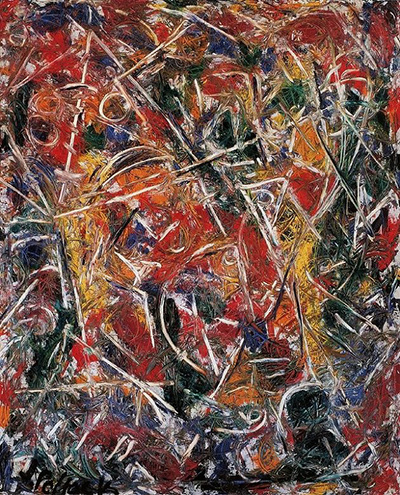Jackson Pollock has created numerous paintings using his method of strategically pouring paint onto a canvas. His "Croaking Movement" Painting displays the same energy that is evident in pieces such as Number 31 and Eyes In The Heat.
Croaking Movement was created in 1946, just when Pollock was developing more of the technique that would aid in his rise to prominence. As an example of Action Painting, it displays the hurried movement of paint on the canvas, controlled by the artist. Reds and oranges compete for attention with bright green and yellow.
The leader in Abstract Expressionism, Pollock was never shy about putting his whole being into the creation of his art. His expression was without bounds, except those set by his vision of what he wanted on canvas. This work was displayed to the public as a fresh piece almost immediately when it was completed.
Croaking Movement was one of seven pieces exhibited at Peggy Guggenheim's show in Manhattan, New York City. All of the paintings were done in late 1946. As a collection, the works were given the name "Sounds In The Grass". They were shown at Guggenheim's Art Of This Century gallery in early 1947.
Bold strokes of white cut across the canvas, delineating borders while creating a hoarse texture that perhaps lends the work its name. Pollock felt a connection to nature and often longed to integrate himself fully into the creative process. His inspiration for this results in a rich palette of colour.
Shortly before, the artist had moved to Long Island, converting a bedroom there into his studio. This lead to a new step in his process of creating art. All of the pieces in Sounds In The Grass were done by squeezing paint from a tube directly onto the canvas.
Blunt instruments were applied to each batch of oils, creating thick pastes with texture and form. In this way, "Croaking Movement" carries you along swooping, intense swaths.




